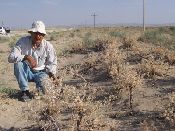|
Rangeland resting: experimental results and conclusions |
 |
|
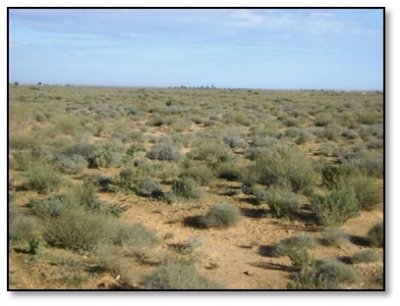 |
The Zeuss Koutine area in Tunisia area suffers from the exploitation of pastoral land. Ever since the ground water has been exploited by means of drilling a lot of pastoral land was converted into irrigated cropland or orchard. This has increased the pressure on the remaining land causing over grazing and associated soil erosion problem. An experiment was carried out to improve plant cover and biodiversity in the grazing areas aiming at minimizing land degradation. |
Experiment: rangeland resting
|
The resting technique was carried out on three sites (Alamet Mechlouch, Beni Ghezaiel and Sidi Makhlouf) within four management modes: RK3: rested rangeland, RK2: moderately degraded rangeland, RK1: overgrazed rangeland, rk: abandoned cultivated rangeland.
Several transects of 20 m long each, were established in the different representative plant communities of the target rangeland, and used to determine plant cover parameters according to the points-quadrats method.
The monitoring concerned the evolution of some descriptors (global plant cover, specific frequencies, flora richness, the plant density and the range biomass production as well as the grazing capacity). The experiment was conducted during four years: spring 2007 (initial state), spring 2008, spring 2009 and spring 2010. |
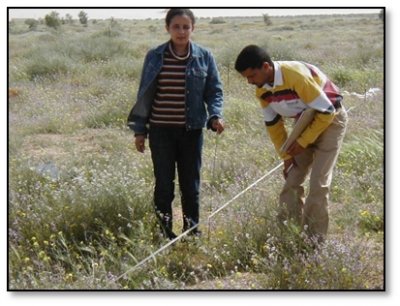 |
The experiment shows that there is an increase of plant species when the plots are rested for several years. The the number of species already doubles from 10 to >20 in the first year of resting and fluctuates after related to lacel circumstances. The degraded plots (RK2) have the lowest species number. In all the sites, the beneficial effect of resting on plant diversity is clear.
This effect may be hidden by the climatic conditions of the year. In rainy seasons, annual species are very abundant also in degraded sites.
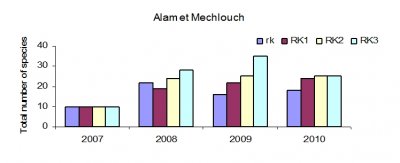 |
 |
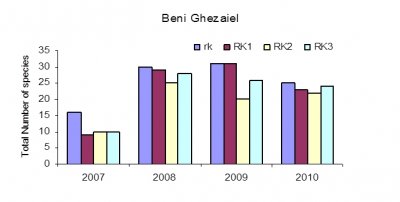 |
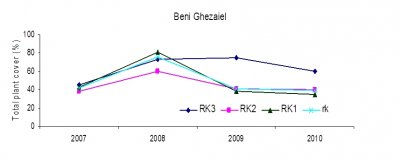 |
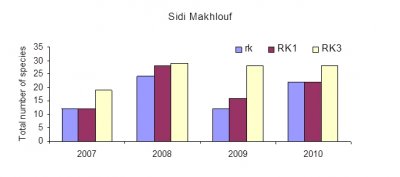 |
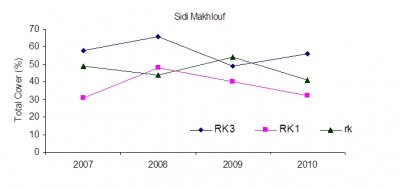 |
| Changes in number of species |
Changes in plant cover |
The resting technique also helps in improving the total plant cover. This is more obvious in dry periods when only perennial cover can be observed.
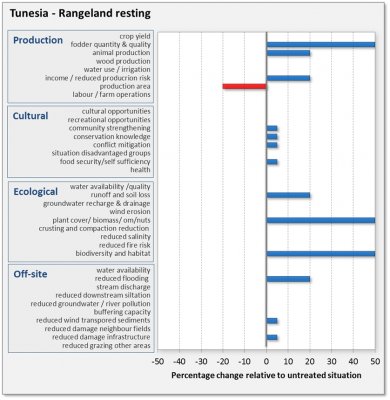 |
The results are evaluated from a production, socio-cultural and economic point of view. The bars express the estimated or measured percentage of change with respect to the reference situation. This change can be positive (blue) or negative (red). Note that this evaluation is based on the experiments, on the long term experience of the coordinating team in this area and on consultations with the farmers. |
| The stakeholders meetings show the technology as well adapted technique for the environment. About 10% of the land user families have applied the technology with external support and 1% of the land user families have applied it without external support. This support is needed because resting means land is taken out of production temporarily and with current animal stocking levels this means either subsidy in the form of fodder or an increased risk of overgrazing the remaining area. |
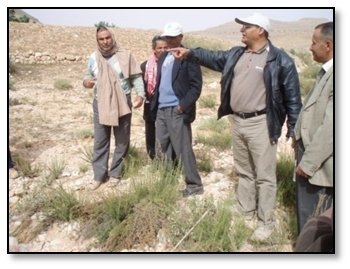 |
|
The rangeland resting technology helps increase plant cover and plant biodiversity, especially in dryer years, as compared to conventional grazing land. In wetter years the degradation is less visible, so resting is especially beneficial for resilience: recovery in dry years.
|
|
To make the technology successful and sustainable it has to be accepted by the people. It could mean change of grazing culture (planning of resting areas which is agreed upon by the community and adapting to less grazing areas. This needs management of the communal lands and in the beg7inning possibly extra subsidy for fodder.
|
|

